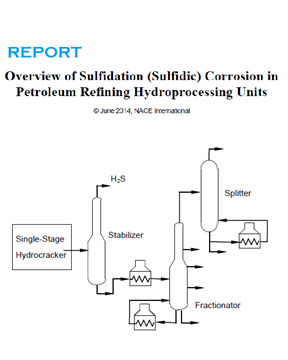Search
Products tagged with 'Standards Benefit For Members'
View as
Sort by
Display
per page
NACE PUBLICATION 21414-SG (2016 Edition), “Maintenance Overcoating of Railcar Exteriors”
Product Number:
21414-SG
ISBN:
1-57590-363-6
Publication Date:
2016
$109.00
NACE Publication 21428-2018 - Corrosion Inhibiting Admixtures for Reinforced Concrete-A State of the Art Report
Product Number:
21428-SG
Publication Date:
2018
$109.00
NACE Publication 21429-2018-SG - State of the Art Report on Corrosion-Resistant Reinforcement
Product Number:
21429-SG
Publication Date:
2018
$109.00
NACE Publication 30105-2005-SG, Electrical Isolation/Continuity and Coating Issues for Offshore Pipeline Cathodic Protection Systems
Product Number:
24228-SG
ISBN:
NACE Pub 30105
$109.00
NACE Publication 34103-2014-SG, Overview of Sulfidation (Sulfidic) Corrosion in Petroleum Refining Hydroprocessing Units
Product Number:
24222-SG
Publication Date:
2014
$109.00
NACE Publication 34105-2005-SG, Effect of Nonextractable Chlorides on Refinery Corrosion and Fouling
Product Number:
24226-SG
ISBN:
NACE Pub 34105
$109.00
NACE Publication 34108-SG, Review and Survey of Alkaline Carbonate Stress Corrosion Cracking in Refinery Sour Waters
Product Number:
24236-SG
Publication Date:
2008
$109.00
NACE Publication 35100-2017, CORRECTED VERSION-2022, In-Line Inspection of Pipelines
Product Number:
24211-SG
$109.00
NACE Publication 35101-2001-SG, Plastic Liners for Oilfield Pipelines
Product Number:
24212-SG
ISBN:
35101Plastic Li
$109.00
NACE Publication 35108-2008-SG, One Hundred Millivolt (mV) Cathodic Polarization Criterion
Product Number:
24235-SG
Publication Date:
2008
$109.00
NACE Publication 35110-2010-SG, AC Corrosion State-of-the-Art: Corrosion Rate, Mechanism, and Mitigation Requirements
Product Number:
24242-SG
$109.00












